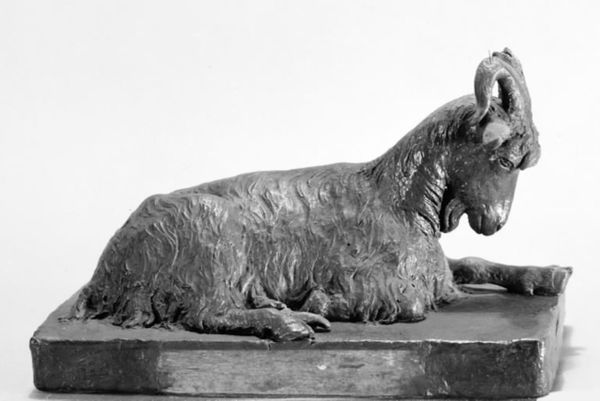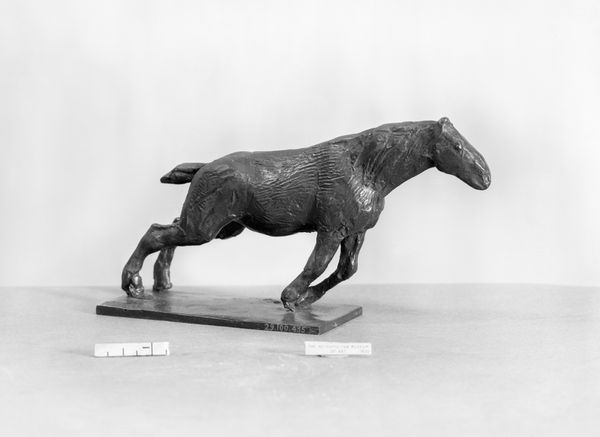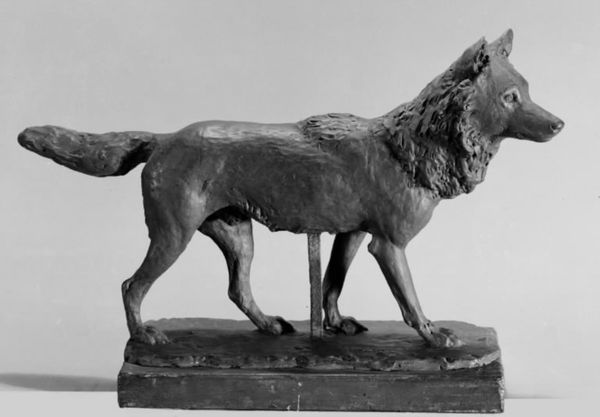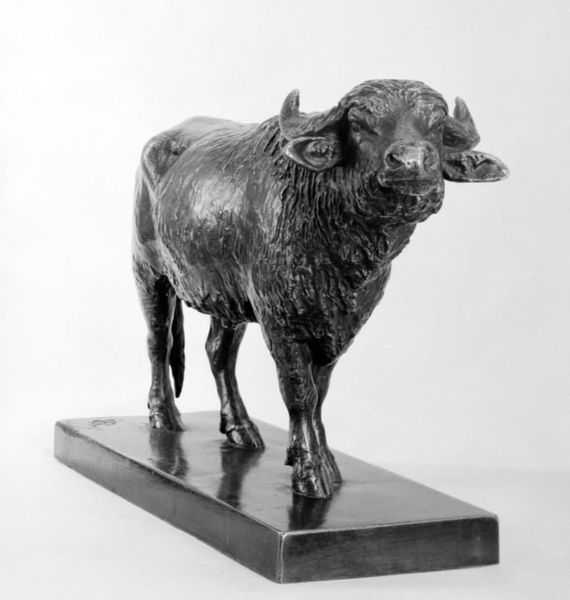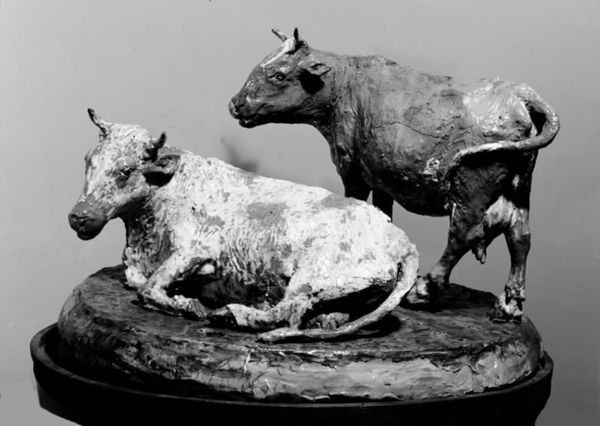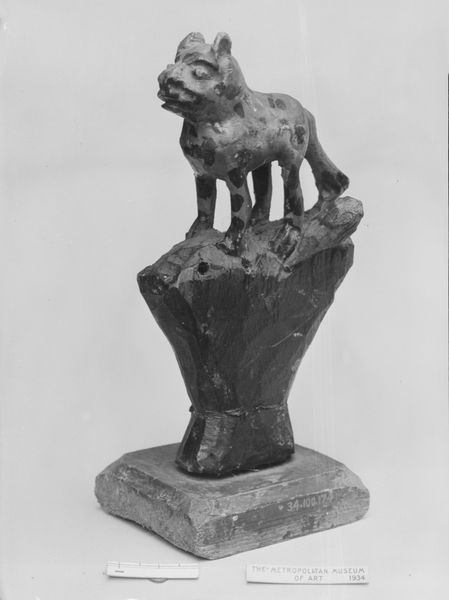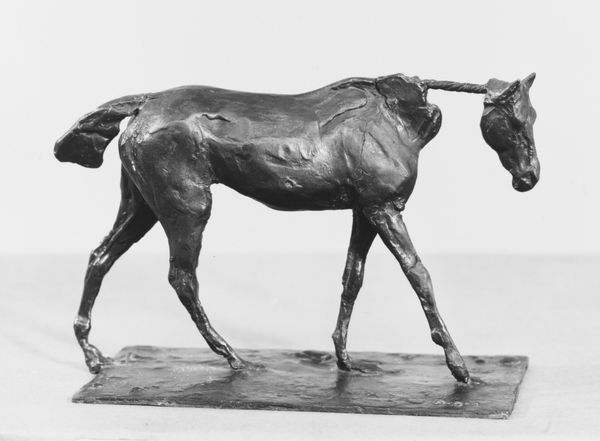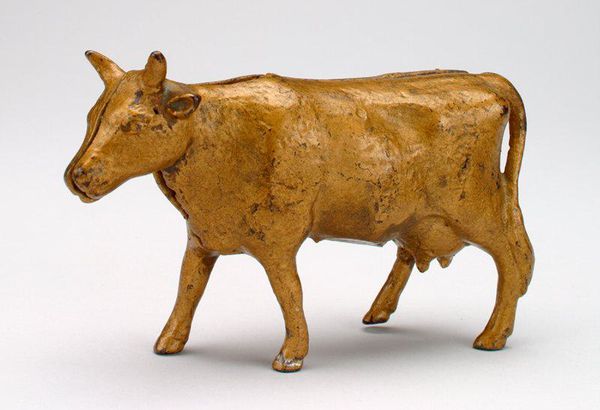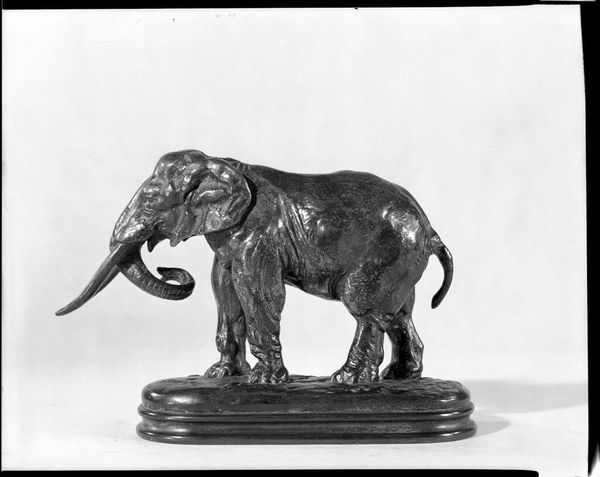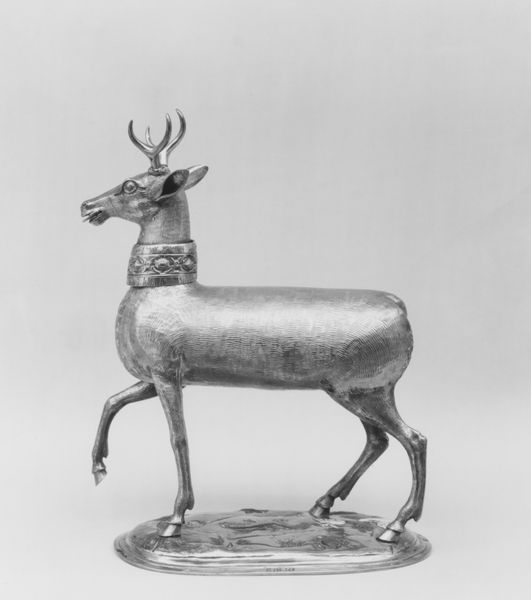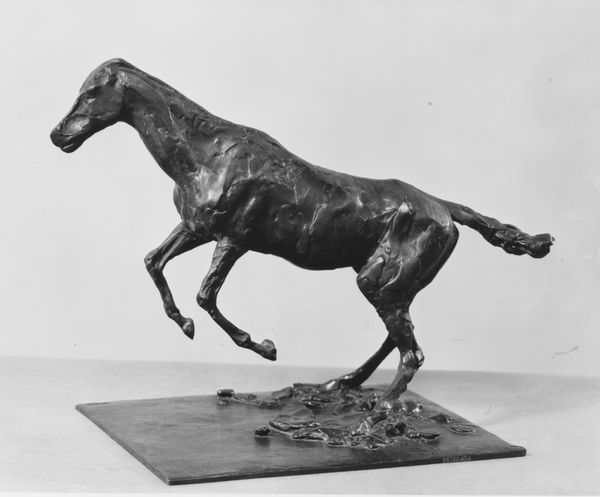
bronze, sculpture
#
animal
#
sculpture
#
bronze
#
sculpture
#
black and white
#
realism
Dimensions: 16.5 cm (height) x 29 cm (width) x 10 cm (depth) (Netto)
Curator: Isn’t he magnificent? This is “Standing Buffalo” crafted by Vilhelm Bissen in 1867, cast in bronze. I find him strangely dignified. Editor: I do, too! Immediately, there's a heaviness, a kind of solemn stillness. You can almost hear it breathing. It’s also… dusty, evocative of nature in a rough way, somehow, despite its perfect stillness. Curator: Bissen, as a sculptor, often looked to classical forms. Although his later works tended to be idealizations, you can already perceive his interest in naturalistic depiction in this bronze Buffalo from the earlier stage of his career. The play of light and shadow really does give him weight, doesn’t it? A sense of grounded presence. Editor: Absolutely! It's interesting that it seems caught between a detailed realism, with the texture of its shaggy fur captured beautifully, and this almost monumental stillness you describe, something almost mythological or imposing. Curator: Exactly. Sculptures like this were increasingly commissioned by public institutions and private patrons who saw them as emblems of progress and Danish national pride. A symbol of agrarian society, you might say. A reminder of simpler, perhaps harder, times. Editor: And yet, Bissen also made busts of royalty. I wonder how those audiences connected to these very different portrayals of power. Was there a unifying aesthetic at play? Were they using these animals as an aesthetic or even political commentary? Curator: It raises questions, for sure. Bissen was definitely riding that wave of national romanticism so prevalent in the arts back then. And those romantic undercurrents subtly imbued everything, from royal portraits to sturdy buffaloes. Editor: It's a fascinating tightrope walk between artistry, nature and socio-political climate, then! Thanks for revealing so many hidden depths. I see more than just a simple sculpture now. Curator: My pleasure. It is important to reflect on the dialogue of form and societal value. What else would an artwork of national romanticism wish to accomplish, if not incite more questions about society?
Comments
No comments
Be the first to comment and join the conversation on the ultimate creative platform.
